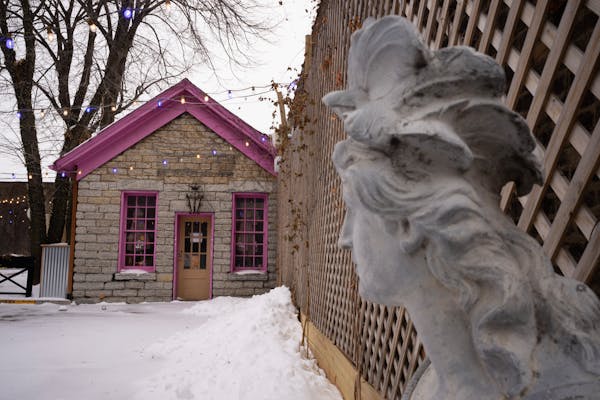The historic Justus Ramsey House is going to come down after all. But instead of a wrecking ball doing the job, the 1852 stone cottage will be disassembled, catalogued, moved off Burger Moe's patio and stored.
The City Council, acting as the Housing and Redevelopment Authority, on Wednesday authorized spending $84,000 to preserve the building until it can be reassembled at a later time. The move takes the pioneer-era stone cottage off Burger Moe's owner Mojtaba Sharifkhani's hands, but kicks its ultimate fate down the road.
Sharifkhani, who goes by the name Moe Sharif, "is pleased that there is an outcome that addresses the current challenge while also making sure history is preserved," said spokesman Mike Zipko. "Moe has always wanted to find the best outcome, and the agreement to move the building to a new location with a new owner is the right way for all of us to move forward."
On that point, however, the exact details of the cottage's future are still to be decided.
Don Kohler and Rita Dalbec stepped forward a few weeks ago, offering to place the structure on a vacant lot they own farther west on W. 7th Street. In addition, they said they would put more than $300,000 of their own money into restoring the limestone structure — provided the city or another entity would pay to move it.
Council Member Rebecca Noecker, who represents the area, introduced a resolution Wednesday that would have spent $115,000 to do that. But when it became clear the couple plans to live in the house when it is finished, Council President Amy Brendmoen and Council Members Nelsie Yang and Chris Tolbert balked. They said they're uncomfortable with subsidizing a private home and want more discussion.
Saying the cottage's deteriorating condition makes it critical to stabilize it now, Noecker amended her resolution to spend $84,000 — the amount needed to take it apart, move it and store it. Where the cottage goes and what money is spent to get it there can be debated later, she said.
The city spending public money to preserve historic private properties has precedent, Noecker said. St. Paul spent $500,000 to help preserve the old Hope fire station, she said — it's now Hope Breakfast Bar.
Becoming a private home is a better outcome for the Justus Ramsey House than demolition, Noecker said. And even as a home, she said, the public will have better access to it on its own lot, with a placard noting its significance, than it ever did at Burger Moe's.
"It's on private property now, behind a fence, on the patio. People don't even know it exists," Noecker said. "Really, the alternative is the building's in a landfill."
Wednesday's action came a day after a Ramsey County judge issued a temporary restraining order to prevent the building from being razed.
The cottage is the oldest surviving limestone house in St. Paul, and is listed on three historic registers. Sharifkhani applied for a demolition permit last summer after a back wall of the structure collapsed.
City inspectors agreed that the building's condition made it a potential danger and recommended it be demolished. But the city's Heritage Preservation Commission in December disagreed, and denied a demolition permit.
On Monday, Mayor Melvin Carter sided with inspectors and Sharifkhani and issued an order allowing the cottage to be demolished. Preservationists filed a lawsuit and asked for a temporary restraining order. After staying at the site all night, they persuaded a judge to sign the order after 7 a.m. Tuesday.
Tom Schroeder, who has led the fight to preserve the 170-year-old stone cottage, said Wednesday that he is confident that the move to Kohler and Dalbec's lot will work out in the end.
"We all look for simple, straightforward solutions, but they often turn out to be more complicated than we thought," he said.
The tiny house was built in 1852 for Justus C. Ramsey, brother of Alexander Ramsey, who owned the property jointly with Alexander and others from 1849 to 1852. The first known resident was Robert A. Smith in 1853. Smith went on to become St. Paul's longest-serving mayor.
The building would later serve as an anchor for St. Paul's early Black community, as a home to railroad porters and shopkeepers.
Previous owners of the restaurant had used the cottage as a separate event space.
Carolyn Parnell, 'trailblazer' who served as Minnesota's first IT commissioner, dies


